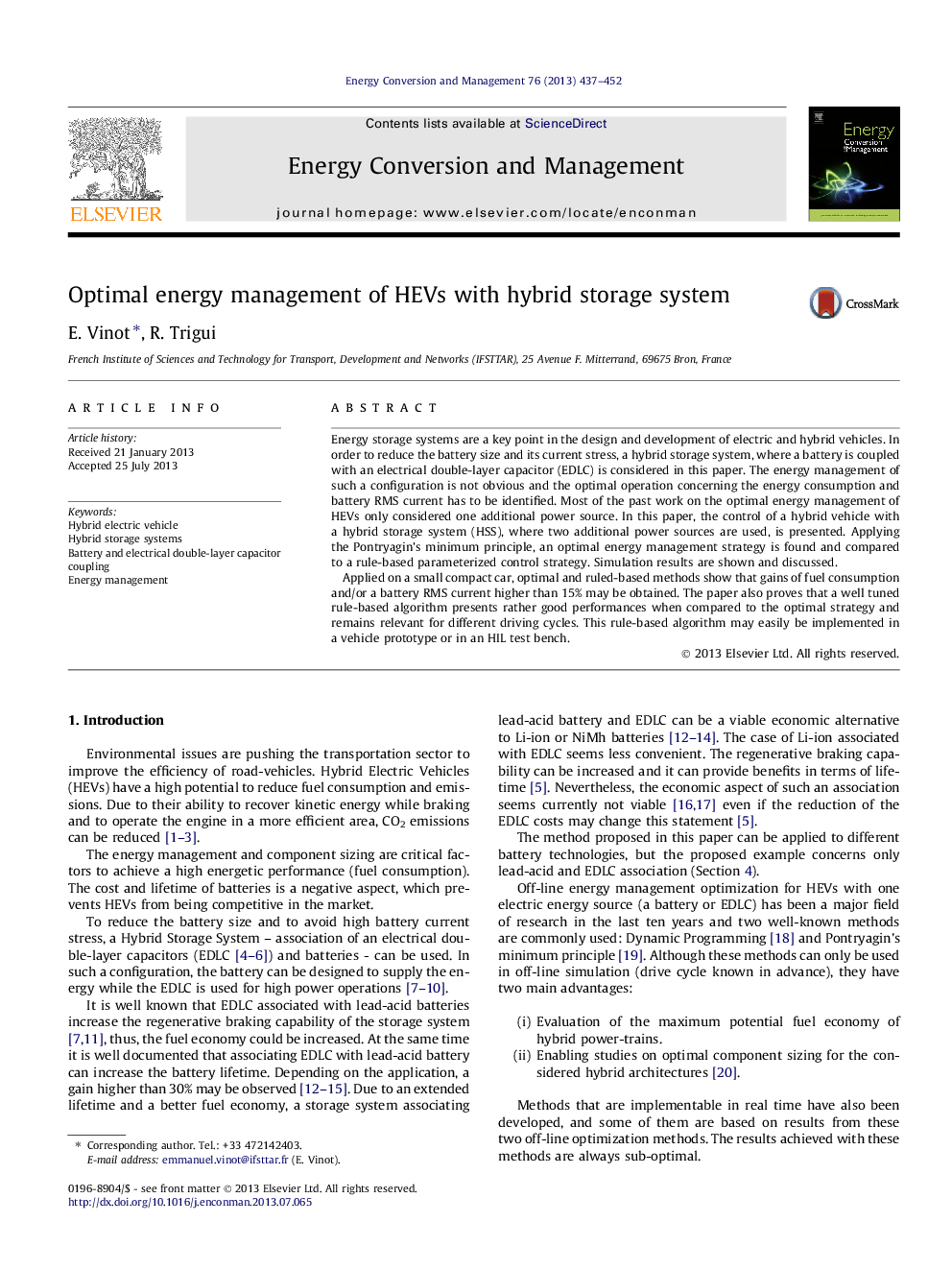| Article ID | Journal | Published Year | Pages | File Type |
|---|---|---|---|---|
| 760801 | Energy Conversion and Management | 2013 | 16 Pages |
•A battery and ultra-capacitor system for parallel hybrid vehicle is considered.•Optimal management using Pontryagin’s minimum principle is developed.•Battery stress limitation is taken into account by means of RMS current.•Rule based management approaching the optimal control is proposed.•Comparison between rule based and optimal management are proposed using Pareto front.
Energy storage systems are a key point in the design and development of electric and hybrid vehicles. In order to reduce the battery size and its current stress, a hybrid storage system, where a battery is coupled with an electrical double-layer capacitor (EDLC) is considered in this paper. The energy management of such a configuration is not obvious and the optimal operation concerning the energy consumption and battery RMS current has to be identified. Most of the past work on the optimal energy management of HEVs only considered one additional power source. In this paper, the control of a hybrid vehicle with a hybrid storage system (HSS), where two additional power sources are used, is presented. Applying the Pontryagin’s minimum principle, an optimal energy management strategy is found and compared to a rule-based parameterized control strategy. Simulation results are shown and discussed.Applied on a small compact car, optimal and ruled-based methods show that gains of fuel consumption and/or a battery RMS current higher than 15% may be obtained. The paper also proves that a well tuned rule-based algorithm presents rather good performances when compared to the optimal strategy and remains relevant for different driving cycles. This rule-based algorithm may easily be implemented in a vehicle prototype or in an HIL test bench.
